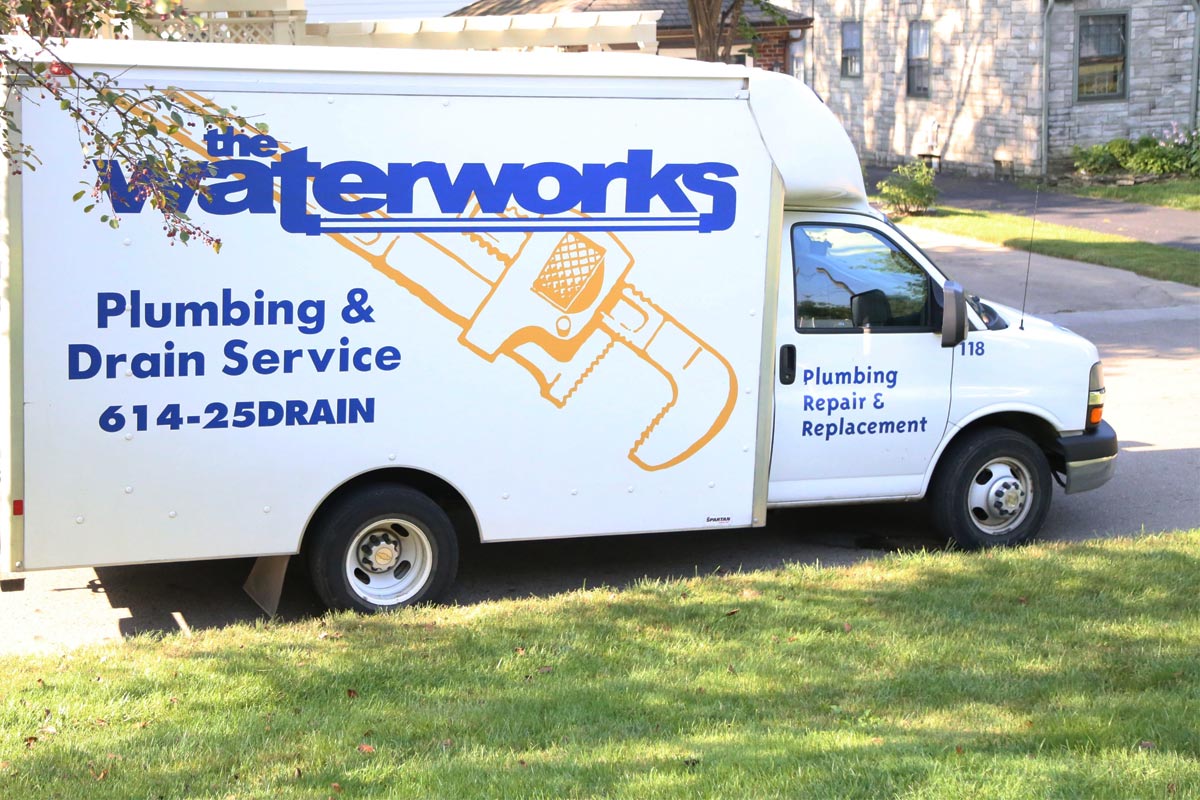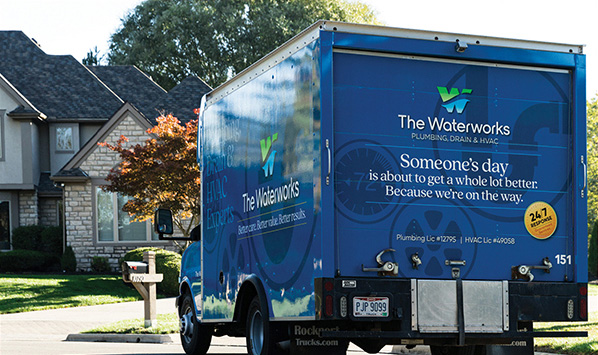Sump Pump Repair and Installation Columbus
What is a sump pump? A sump pump is the savior of home basements as it is a great way to reduce the risk of flood damage to your home. In many homes in and around central Ohio, you will find a small pit (24” in diameter) with a black lid that is dug in the corner floor of your basement. It can also be in the same pit as your radon remediation solution. The pump itself is submersed into the pit at the lowest point of your house. It The pit is designed to accumulate water from your interior footer tile, relieving unwanted water pressure from your basement floor and footer. The pump inside the pit is designed to discharge that water to an exit point nearest the pit. Most of the time the discharge from the sump pump will be directly connected to the underground piping that your downspouts are connected to. This water and the rainwater from your roof are traditionally designed to discharge at the street or a nearby creek bed.
How does it work? Most days, the sump pump just sits quietly in its little corner. However, when a torrential downpour hits and the ground around your home is super saturated with water, it goes into action. Through a network of pipes, the excess groundwater funnels toward the sump pit, and it begins to fill with water. This activates the sump pump float switch and turns on the pump. By removing the water from the pit and draining it into a nearby storm drain, street, dry well or detention pond, the sump pump actively prevents any excess water from applying undue stress on of your basement floor and foundation.

Sump pumps require electricity. As noted, they operate in and/or around water. It is important that the outlet you connect to the pump features a ground fault circuit interrupter (GFCI). It is also recommended that you hire a professional to install a battery backup sump pump for peace of mind the event of loss of electricity. Flooding often accompanies severe storms, as do power failures. If your sump pump detects water, but has no power source to operate, you may be exposed to possible basement flooding.
Benefits of a Sump Pump
Do You Need a Sump Pump?
Depending on elevation, location and age, some older homes need a sump pit and pump installed. Are any of the following true about your home?
- Weather. If you live in a climate that receives heavy rain or snow, the answer is YES. Here in Central Ohio, we certainly get our fair share of heavy rain and snowfall. Thus, our basements become flood zones.
- Flood-Prone Zone. Low-lying properties, poorly draining soil and homes surrounded by hills are more likely to experience rising groundwater levels during heavy rains, thunderstorms, and spring runoff. In addition, be aware of buying a home in certain areas managed by city sewers, etc. that are prone to flooding. Do your research.
- Past water issues. If your basement has flooded previously or if you detect high levels of moisture in your basement, you may want to think about installing a sump pump.
- Finished Basement. If you invested in a lower level family room, you may want to consider sump pump installation, even if your home is not categorized as a high-risk property. One flooded basement = loss of furniture, appliances, memorabilia and more.
Sump Pump and Underground Downspout line Maintenance
Like other operating systems, your sump pump and pit should be checked on a regular basis. The influx of outside water can be polluted with dirt, sand and other debris that can clog the pump and prevent it from operating properly and at maximum capacity in the event of an emergency. We recommend testing your sump pump and servicing underground downspout lines every six to twelve months.
DIY Checks. If you are handy around the house, there are some simple things you can look for or do yourself to check your sump pump operation.
- Be sure that the pump is sitting upright. If not, the float arm can become jammed or if the pump is slanted or has fallen over, it will not pump the water as it should if at all.
- Check the GFCI (ground fault circuit interrupter) outlet to make sure it is plugged in and that the cord is in good condition. If there is any moisture present, the GFCI breaker may trip, causing a malfunction. The sump pump will shut down and you will have to reset it.
- Test the pump: get a 5-gallon bucket and pour some water into the pump pit. You should hear it kick on immediately and drain the water away quickly. If not, call a professional plumber for service. You should also go outside and make sure the water is being discharged.
- Visually inspect the exterior connections of downspouts and sump pump discharge line. Be aware of problems such as, settled earth, washed away mulch and disconnected pipes.
Sump Pump Malfunctions- Now What?
As mentioned earlier, it is recommended that you hire a professional to install a battery backup sump pump for peace of mind in the event of loss of electricity. However, there are things that can go awry. Here are a few things to be aware of:
- Debris in the pump. As noted, when water comes in from the outside, it can carry dirt, sand, and other particles. This is especially true if the sump pump itself is an open pit without a solid lid. If too much dirt and debris get into the sump pump, it will not operate properly and may even shut down.
- Check the SWITCH – if the switch gets stuck in the ON position, this will burn the motor out. AND may cause a fire.
- Clogged or Frozen Discharge Lines. One choice here is by installing a system that includes a slotted discharge pipe. This permits the water to escape your home even if the pipes are clogged.
- Missing or broken check valve. Water that is expelled from the sump pump must usually travel 6-10 feet vertically to exit your property. Any problems with the check valves will increase the back pressure on the pump, adding strain to the system.
- Improper connection to sewage the drain line. Most systems are not designed to handle large volumes of runoff resulting from heavy rain or melting snow. Ever notice how large city sewer overflow during downpours? Therefore. If your sump pump connects to a combination storm/sewer line, you may be at risk of contributing to system overload, which can cause water back-ups. This connection may also provide an additional point of ingress for water. Better yet, consider disconnecting and rerouting your sump pump discharge line from your sewer system.
- Life Expectancy of Sump Pump. On average, most pumps last around 10 years. Long term lifespan is directly affected by the cleanliness and acidity of the water entering the system.




